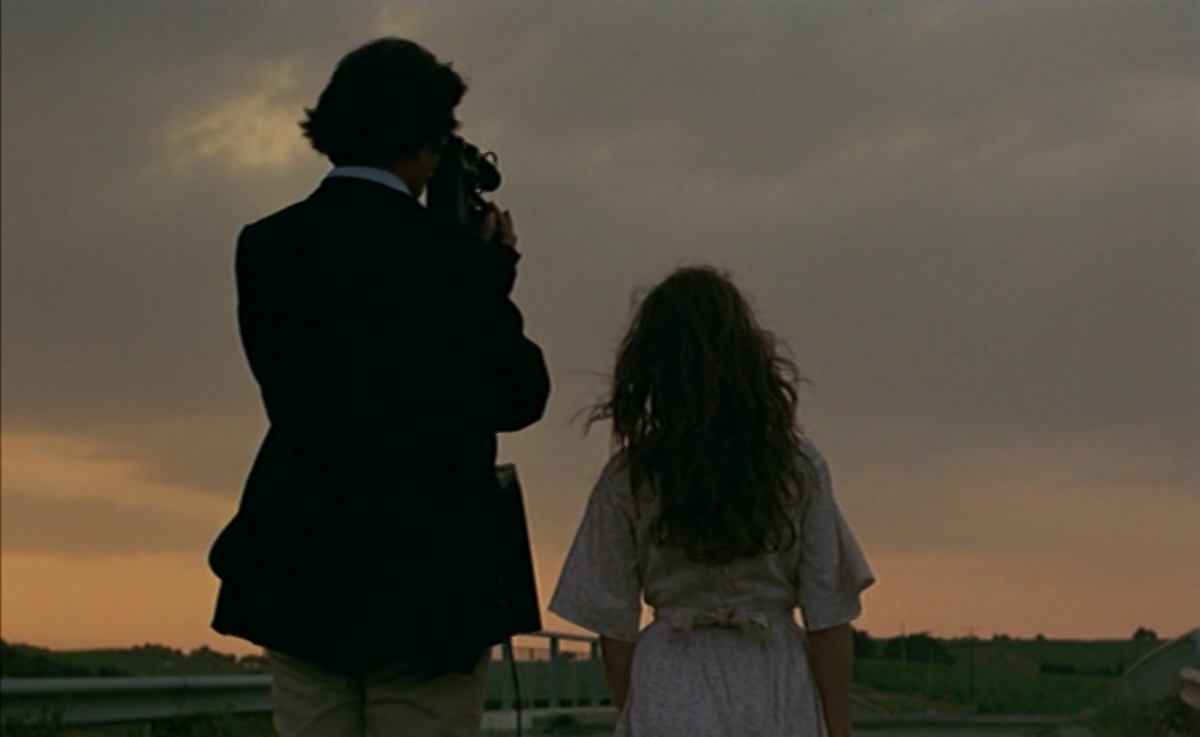When directorial style can so often lapse into self-conscious mannerism, it can be difficult to countenance the notion of a genuine fantasist. This, it’s worth immediately clarifying, has nothing to do with an artist’s propensity for (or aversion to) supernatural or fabulist subject matter, but rather with those directors whose personalities seem to burst on screen as if untrammeled by convention. Take the case of Jacques Doillon, a filmmaker whose sensibility seems to permeate every facet of his work. With some directors, one might be tempted to locate their personality in a single, on-screen surrogate, or one aspect of a character’s habits, or in the particular ways that their characters interact with the larger world of the film. But as filmmaker-critic Dan Sallitt has observed, Doillon employs no such indirection: “[He] is everyone in his films, the men and women both.” T.S. Eliot once remarked that Henry James had a mind so fine that no idea could violate it, a statement that gets at how the author seemed capable of churning up the world, Ideas and all, into his prose. Likewise, the essential draw of Doillon’s cinema is the prospect of getting swept up by the destabilizing force of a singular directorial personality, and the exhilarating possibility of somehow landing on one’s feet by the end.
Born in Paris in 1944, Doillon belongs to the so-called Second New Wave, a group of filmmakers (including Maurice Pialat, Jean Eustache, Philippe Garrel, and Marguerite Duras) who emerged years after the nouvelle vague had been firmly established. But if he felt either constrained or bothered by having to make films in a post-New Wave world, he didn’t show it much. Doillon’s first two features firmly established him as a child of May ’68: L’An 01 (1973) includes segments from Alain Resnais and Jean Rouch, and offers a series of speculative, stylistically diverse sketches of a utopian France; while Les Doigts dans la tête (Touched in the Head) (1974) is infused with the ambient air of collapse one finds in the dilapidated Bohemia of Eustache’s towering La Maman et la putain (The Mother and the Whore) (1973). But with the 1979 release of both La Femme qui pleure (The Crying Woman) and La Drôlesse (The Hussy), the director established the preoccupations that would recur throughout his now five-decade career: a fixation on family life, with an occasional focus on sexual or social taboos; an unpatronizing attention to children and childhood; and, intimately related to both, a boundless fascination with bodies and play.
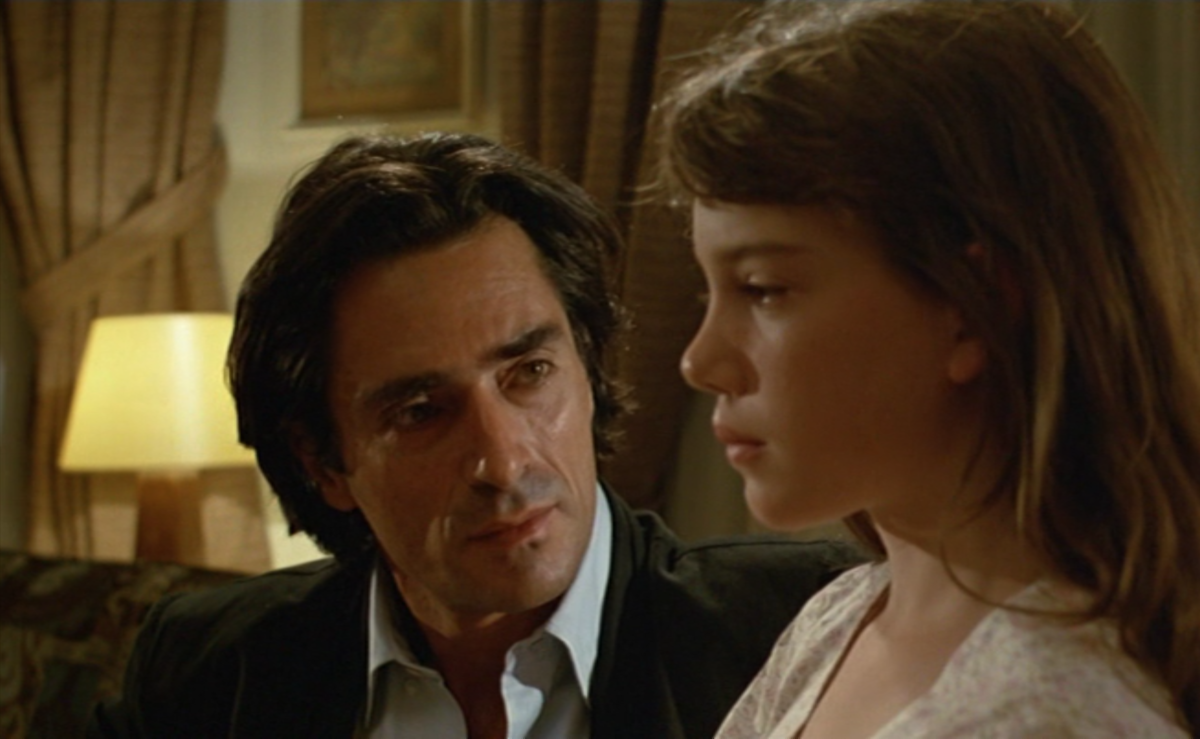
These elements show up in a range of expressive possibilities across Doillon’s oeuvre, but they reach something of an early peak in his 1985 masterpiece, La Vie de famille. Juliette Binoche appears in a small early role as Natacha, a teenager whose relationship to her mother Mara (Juliet Berto) and stepfather Emmanuel (Sami Frey) is on the verge of collapse. From this intense, cloistered scenario, Doillon moves on to explore the film’s main subject: the relationship between Emmanuel and Elise (Mara Goyet), his precocious 11-year-old daughter from a previous marriage. His weekly visit to see her is, by now, established ritual. Though when he goes to pick her up, he is confronted in turn with a different sort of formality: a pillow fort of Elise’s construction, and a series of Alice in Wonderland-esque instructions, the first of which reads, “Enter here, or not at all.”
For a time, the relationship between father and daughter largely comprises a set of shared codes and familiar games. Indeed, the strength of their bond is closely identified with their capacities for improvisation and their willingness to play. (The unspoken implication is that Emmanuel’s strained relationships with Mara and Natacha stem from their aversion to such casual distraction.) But there is, too, an increasing emotional distance between the pair, which leads Emmanuel to break their established pattern and take Elise for the weekend. Thereafter, La Vie de famille spins out into an extended road trip through southern France and northern Spain: it becomes, as Sallitt writes, Pierrot le Fou, “a story of the last romantic lovers, transposed to a father-daughter key.”
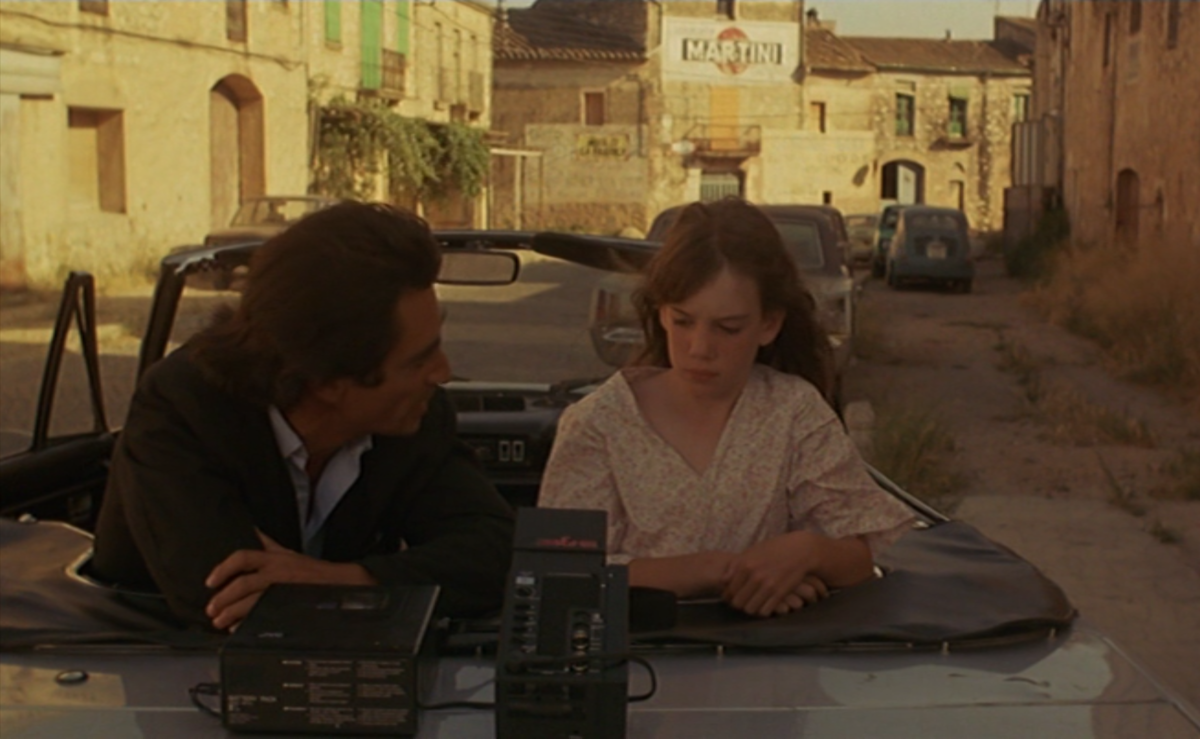
Reviewing La Vie de famille in a 1986 issue of Film Quarterly, Alan Williams described Doillon as “a kind of minimalist Pialat with a dash of Rivette thrown in—or perhaps the opposite,” while immediately acknowledging that “perhaps such references make no sense at all when applied to such a strong personality.” With some knowledge of Doillon’s subsequent career, the latter statement rings far truer than the former. But while the “minimalist” designation does seem rather misplaced, both directors are useful starting points for taking stock of Doillon’s style, so it’s worth developing the comparisons.
In the case of Rivette, Williams specifically compares La Vie de famille to L’Amour fou (1969). Given the importance that both films (not to mention both directors) place on the notion of play, this comparison makes a good deal of sense. The climax of Rivette’s film is no less than an exhaustive examination of play—its destructiveness and creative power, its revolutionary energies as well as its tedium—observing as a husband-and-wife pair (Jean-Pierre Kalfon and Bulle Ogier) launch an extended assault on their Parisian apartment, upending its previous order, something like the hijinks of Bringing Up Baby (Howard Hawks, 1938) without the mollifying comedy. Likewise, it would be possible to chart Elise’s trip with her father based just on the various games they play—though the recurring device Doillon deploys is a video camera, which Elise uses to shoot a school assignment, a kind of adventure story of her own imagining, about a lost boy who ends up at a road marked “The End of the World.” Since their interactions are so often filtered through acts of improvisation, play, and sparring wit—Elise is articulate beyond her years—interpretations of their relationship can only be tentative. All the same, the trip pushes their physical and emotional capacities to the limit, culminating in a movingly direct, 20-minute passage in a Madrid hotel room, where the video camera is employed in a series of confessions between father and daughter. It is, in some sense, yet another game. But there is, too, a mournful sense of finality to the proceedings, and when Elise expresses her desire to return home, declaring, “I have no control over what happens tomorrow. I have no intention of repeating this,” we might recall Ogier’s final statement in L’Amour fou: “We’ve played too much, I’ve had enough.”

Still, the comparison between both directors only goes so far. Whereas Rivette often gives his actors and characters a certain independence from his directorial control, most everything in a Doillon film feels calibrated to his authorial focus. It is part of Rivette’s design in L’Amour fou that Kalfon should seem central to the story and Ogier peripheral, and that the latter should emerge at the end with a sense of triumph, however measured. Doillon, though, doesn’t divide our attentions in this way, and while our sympathies certainly swing between the two principals, the balance never shifts decisively in favor of father or daughter. The sorrow of the La Vie de famille’s conclusion is their painful, but mutually fulfilling transformation of their relationship.
In considering Doillon’s connection to Pialat, À Nos Amours (1983) emerges as the most plausible, proximal point of reference. For one thing, La Vie de famille explores a father-daughter relationship that, like Pialat’s film, ends on freeze-frame of the daughter about to embark on a plane ride. For another, there’s Doillon’s willingness to foreground unpleasant behavior, largely centered on the domineering aspects of Frey’s complex father figure. But in other respects the two directors could hardly be further apart. Both may be said to take unconventional approaches to fiction-making, but whereas Pialat tends to attack or suppress narrative unity through brusque, deliberately jagged fragments of documentary reality, Doillon leans the other way, taking his narratives to something of an imaginative limit, while harmonizing his materials into a mellifluous, sensuous rhythm to keep the story afloat. La Vie de famille features a great number of flowing Steadicam sequences, and this combination of aestheticized camerawork, adroit character movement, and sharply scripted dialogue would carry through to the films of Doillon’s that followed, reaching something of an apotheosis in his 1990s work, with films such as Le Petit criminel (1990) and Amoureuse (1992).
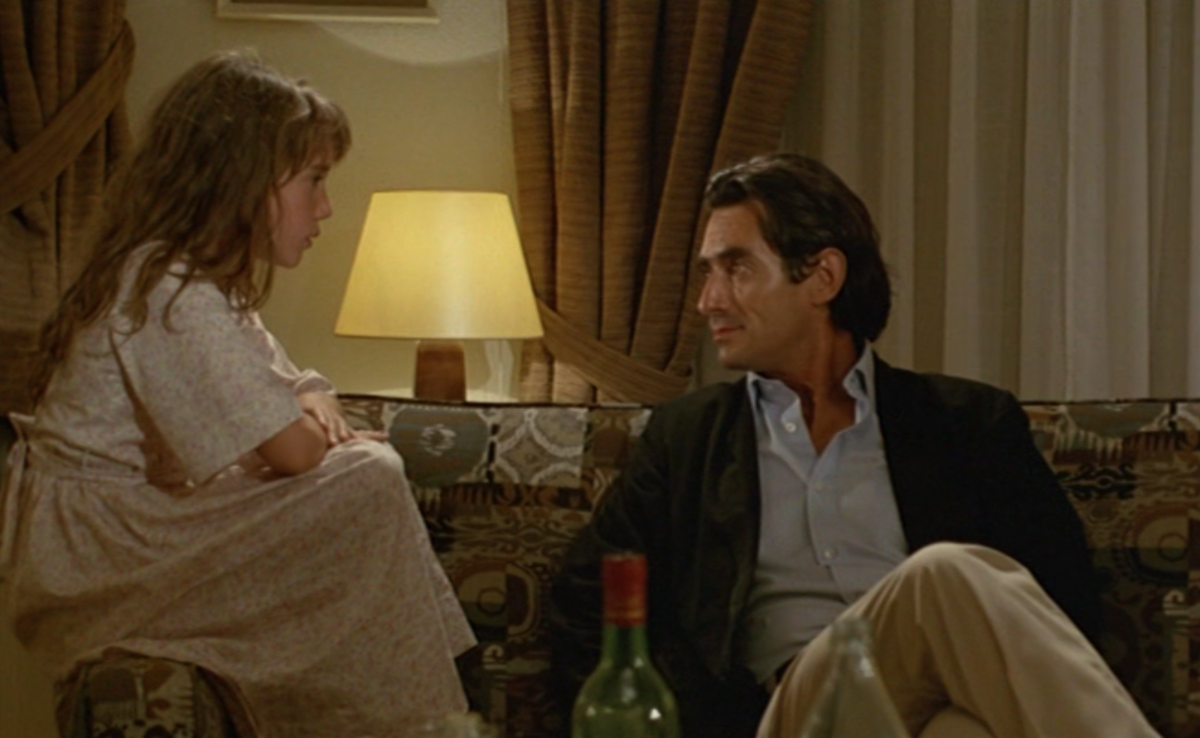
Needless to say, it should be unsurprising that these aforementioned directors should display such considerable differences in creative emphasis. The risk of leaving an artist’s methods unaccounted for, of course, is that their work may remain marginal, and may suffer from always being defined in relation to something else, rather than on its own terms. Doillon’s obscurity in English-speaking circles, at least relative to Pialat and Rivette, likely has more to do with contingencies of distribution than any sort of general line on his methods. Still, there is something about him that seems more susceptible to dismissal, more open to charges of indulgence and solipsism. And as I started out by calling Doillon a fantasist, it’s probably worth drawing the designation out in more detail.
What the term should suggest, foremost, is a greater sense of identification between the artist, the total world of the film, and (ideally) the viewer as well. Partly, this has to do with the fact that Doillon’s characters are not sharply contoured beings; one tends to think of them in relation to each other or to a larger situation, rather than on their own. As Sallitt observes of Amoureuse, a love triangle that offers the director ample room to configure and reconfigure his basic dynamic, “Doillon inhabits and inspires all of the characters in this triangle: the distinctions among them correspond more to Doillon’s different aspects than to true character differentiation.” His films are emotionally intense, but our sympathies are almost never concentrated on any single character, and are more often dispersed among different roles. Doillon’s actors don’t often even seem to be playing characters so much as personalities, and it’s no surprise that his films often triangulate between a number of characters rather than shaping themselves around a single role. (Four-year-old Victoire Thivisol’s title role in 1996 Ponette, possibly the greatest child performance in all of cinema, is the exception that proves the rule.) Consequently, his films aren’t conceived so much around catharsis (as in Aristotelian conceptions of drama) as ecstasis: emotions aren’t purged by the film’s unfolding action, but rather linger as a set of enveloping, ever-evolving moods.
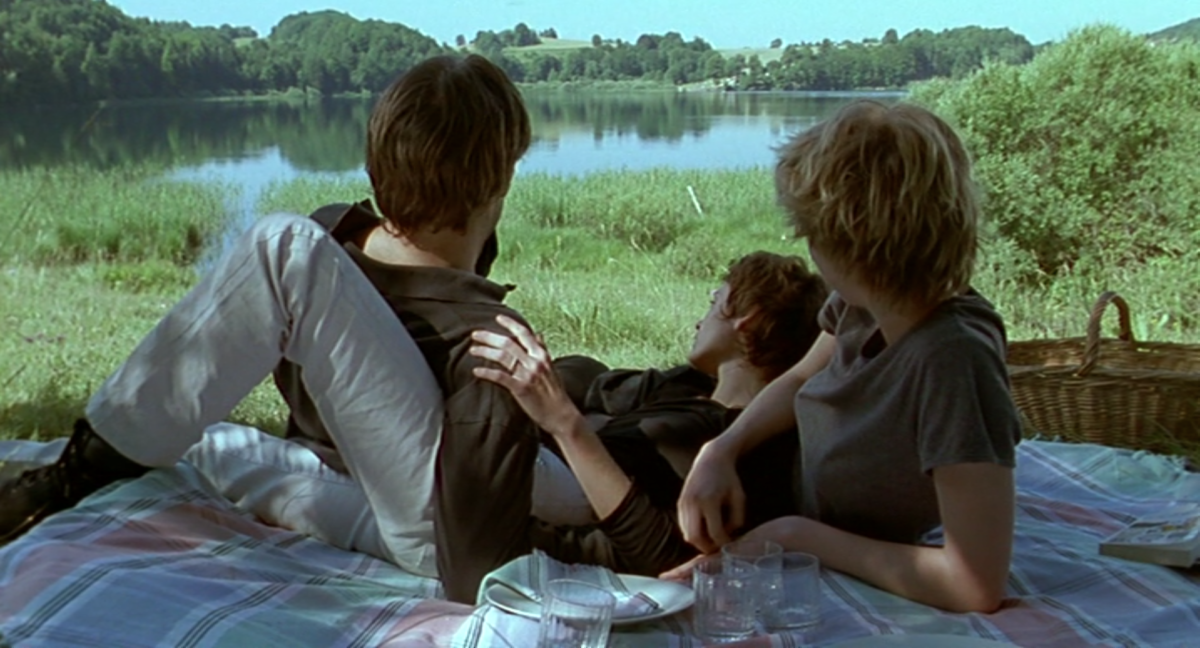
Related to all this is Doillon’s general emphasis on process. Throughout his career, the French director has proved himself a superb scenarist, filling his films with argot, word-play, and all sorts of verbal pyrotechnics. It is quite clear that his work, apart from being meticulously choreographed, is also tightly scripted. Nonetheless, his films often create the uncanny impression that they are spontaneous, present-tense creations, as if we were being involved in the writing of a story: we are often led to wonder not what will happen next, but what he will think of next. This aspect of Doillon’s method is perhaps clearest in Trop (peu) d’amour (Too Much (Little) Love) (1998), a film that adroitly plays on the idea of authorial inspiration, literally rewriting Pier Paolo Pasolini’s Teorema (1968) by having a young screenwriter (Elise Perrier) compose the scenario while embedding herself into the life of a filmmaker (Lambert Wilson) and his family. But one sees this focus on process, too, in less obviously self-referential projects such as Mes séances de lutte (Love Battles) (2013), an utterly daring experiment that distills Doillon’s sundry interests into perhaps their purest form: a ritualized struggle of bodies in motion.
What does all this mean for Doillon’s relationship to his actors? It is of course significant that the director-actor relationship in Doillon’s cinema is mediated not so much by characters as by personalities. Indeed, by actively deemphasizing traditional character differentiation, his work arguably furthers what film theorists have identified as cinema’s natural ability to play on “types” (as opposed to, say, characters in a novel). Even more significant, though, is the echo in his methods of Rivette’s approach to character and performance: the idea, as B. Kite puts it, “that coded patterns and rituals can potentially be inhabited in emotional fullness while still allowing some degree of independence for both the role and the performer.” The crucial difference, again, is that Rivette locates the director at a certain distance from the ritualized repetitions of role and performer, whereas Doillon’s methods are geared to collapsing these very distances. His ultimate drive is towards complete identification of director, role and performer, and viewer.
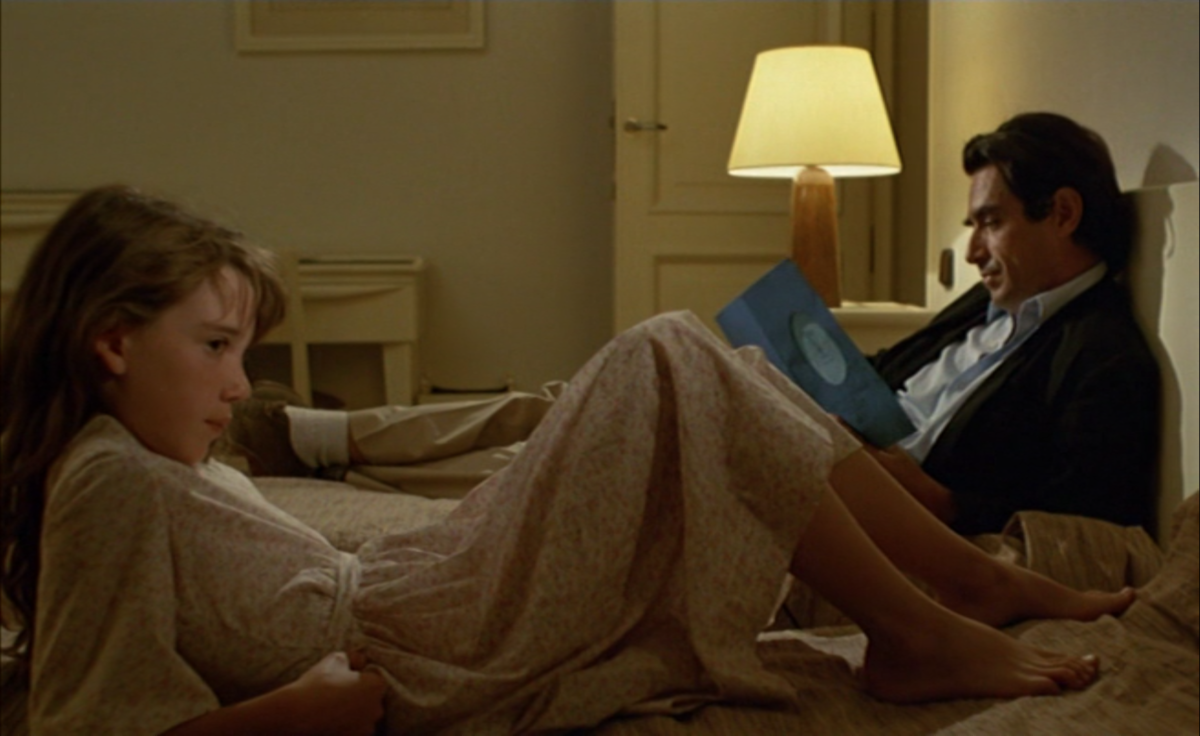
Is this too fanciful a suggestion? Perhaps. But then again, the elements of ritual and play involved here have long been identified not just as an essential part of human activity, but as anterior to everything we call civilization and culture. In Homo Ludens, cultural historian Johan Huizinga’s 1938 study of play, he traces how play manifests in everything from a child’s “only pretending” to the areas of philosophy, art, and religion. This subject is too large to address in any reasonable manner, but I bring it up because it seems to me crucial to understanding Doillon’s work, and ensuring that he not be dismissed as a “mere” fantasist. There is a tendency to see ritual and play as indulgences in illusion or make-believe, and therefore as essentially unserious and even solipsistic. But much of the beauty of Doillon’s work in general, and La Vie de famille in particular, comes from the recognition of just the opposite: that such procedures have an emotional directness that is too often denied, and that rather than being somehow peripheral to our usual modes of communication, these efforts are in fact at the elusive center of it. The essential drive of La Vie de famille’s climactic passage is towards complete expressiveness between father and daughter, and one finds this not just in the flowing lilt of their direct-to-camera addresses in the hotel room, but in the brilliant touches like Frey gesturing to the boundaries of the frame, and Elise choosing not to speak aloud to the camera, forcing her father to read her lips. (Needless to say, rule-finding and rule-breaking are essential elements of any game.)
The essential fantasy of a Doillon film is towards total identification, that he might somehow speak directly to the viewer through coded patterns and ritualized movements—minute calibrations of emphasis, rhythm, behavior, and gesture. The implication is that this fantasy is not his alone. Thus, Doillon’s director-actor collaborations are not so much calls to observe a character or performance, as invitations to participate in a process, to inhabitation and play: Enter here, or not at all.
